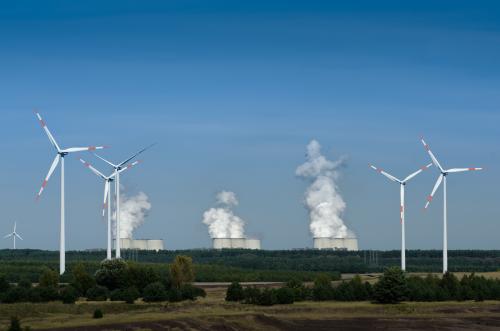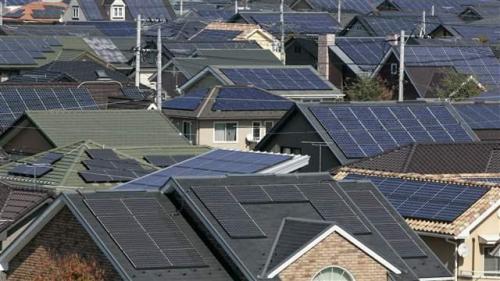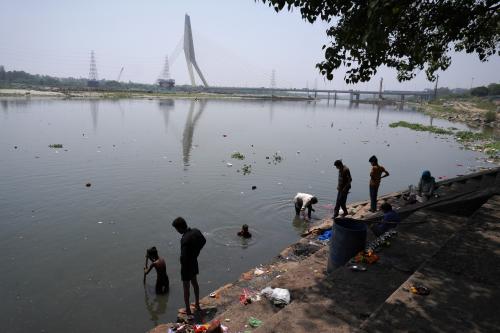The electricity grid is the backbone of a successful clean energy transition. A strong grid will connect new clean energy resources to population centers and support the electrification of transport, heating, and cooking. It will also integrate, balance, and smooth variable resources across the country, enhancing reliability in the face of mounting climate disasters. Furthermore, it will lower the cost of system transformation by enabling more robust national coordination of resources.
In this policy proposal, Shelley Welton (University of Pennsylvania-Carey School of Law and the Kleinman Center for Energy Policy) makes the case that a more fundamental reexamination of how the grid is planned and paid for is a critical prerequisite to accomplishing the rapid infrastructural shift necessary to address climate change. Most boldly, the paper traces how the Federal Energy Regulatory Commission (FERC) could use its remedial authority to disallow utilities from pursuing parochial, expensive grid expansions while requiring robust regional and interregional planning and cost allocation. More modestly, it argues that applying a governance lens on the problems plaguing the grid highlights the importance and viability of numerous smaller steps that regulators could take to improve oversight and transparency in grid governance.
The grid and its transformation
The grid’s central function is to deliver power from entities that make electricity (generators) to entities that consume electricity, also known as “load.” This electricity travels first through larger transmission lines, down into smaller distribution lines that connect to homes and businesses. FERC is the primary regulator of these interstate transmission lines, whereas distribution lines are left to state regulation. Consequently, this paper’s analytical focus is on utilities under FERC’s jurisdiction: investor-owned utilities that own interstate transmission lines. In most parts of the country, Regional Transmission Organizations (RTOs) run the grid. These are essentially collections of utilities that have assembled to jointly manage their systems under the aegis of a non-profit operator. In other regions, utilities manage their own systems and regional transmission development occurs through loose utility collaborations. Under either structure, the system is planned and run by industry incumbents that have limited interest in facilitating change.
Simultaneously, this system is under exorbitant pressure to adapt: As reliability falters under intensifying weather events, demand for clean electricity is swelling. A December 2023 report found that “over the past year, grid planners nearly doubled the 5-year load growth forecast,” from 2.6 percent to 4.7 percent. The Biden Administration and numerous states now share an ambition to transition the U.S. electricity system to 100 percent clean energy by 2035. Yet, expert modeling shows that up to 80 percent of the benefits of Inflation Reduction Act (IRA) investments in clean energy, the country’s primary legal mechanism for decarbonization, will be lost without accompanying grid upgrades. Thus, although large, the grid is not nearly large enough—or interconnected enough.
The challenge
Interconnection. For a new electricity resource to deliver power, it must first be interconnected into the grid. The process of doing so is managed by the regional grid operator—either an RTO or individual utility. When a developer wants to interconnect a new resource, it submits to its regional operator an interconnection request and is placed in an “interconnection queue.” This process for managing interconnection has caused severe challenges as new generation has shifted away from large fossil fuel generators toward smaller, more dispersed renewable energy resources. The number of interconnection requests has quintupled in the last decade, creating major backlogs in interconnection queues. In fact, there is more energy now waiting to enter the U.S. grid than there is on the grid in total. Due to ballooning costs and increasing wait times, only 21 percent of projects that enter interconnection queues get constructed.
Transmission planning. Recognizing the importance of forward planning to the development of adequate transmission capacity in the right places, FERC has long required utilities to engage in transmission planning. The regional plans emerging from these processes are supposed to consider reliability, economic, and public-policy-driven transmission needs and select a suite of regional projects to meet these needs in a cost-effective manner. These requirements are sound in theory; in practice, they have produced disappointing results. Regions rarely engage in successful interregional planning or projects and open-ended guidance for how to pay for large lines compounds planning challenges. Even if a regional or interregional project makes it through the planning and cost allocation stages, there remains the immense challenge of getting the project permitted and sited. For all of these reasons, transmission projects typically take five to 10 years to plan, develop, and construct—with some of the most effective and ambitious regional and interregional projects taking 15 or 20 years.
Reliability. A final electric grid challenge that has made headlines recently is its faltering reliability. Fingers are often pointed at renewable energy, even though there is ample modeling to suggest that a grid that runs on 80 to 90 percent renewables is entirely feasible from a reliability standpoint. One way to ensure reliability under changing conditions is better grid planning and smarter expansion. An interconnected grid is a reliable grid in the face of increasing extreme weather. Yet major regional and interregional transmission lines are rarely built, despite intensifying worries about reliability.
These challenges are grounded in governance. It is easy to trace incumbency bias as a throughline in the challenges of interconnection, transmission planning, and reliability. When it comes to interconnection, the vast quantity of new renewable energy and storage resources waiting to connect to the grid promises to lower electricity prices and force inefficient older generation out of electricity markets. This dynamic threatens incumbent generation owners who logically seek to erect hurdles to new competitions’ entry. These biases carry through to transmission planning: For example, transmission-owning utilities prefer to build smaller lines in their own footprints, so that they can include these assets in the capital base upon which they earn a generous rate of return and avoid cost allocation battles in which they might be forced to pay for upgrades owned by another utility. And utilities often propose fossil fuel construction as the cure to reliability concerns because of their historic investments and expertise in these technologies. As the public agency charged with regulating utilities, FERC has the most potential to address these governance flaws impeding a cost-effective clean energy transition.
Incrementalism is not enough. In July 2023, FERC issued an order aimed at improving regional interconnection processes. The order requires transmission providers to study projects in “clusters” rather than one by one, to increase the speed with which they do so, and to allocate upgrade costs pro rata among clustered projects. Similarly, a new transmission planning order from 2024 improves regional planning processes but does not fundamentally alter their structure or participants’ incentives for weak implementation. Outside regional processes, the Biden Administration is pursuing innovative solutions for advancing a cleaner grid outside of FERC, including the establishment of a “Grid Deployment Office” within the Department of Energy (DOE). These initiatives are all commendable but inadequate to fully redress flaws in grid governance. A stronger set of reforms is needed to fix these flaws at their source.
The proposal
Toward a Federal Grid Planning Authority. Congress should pass legislation creating a “Federal Grid Planning Authority” (FGPA) and task it with creating a national grid development plan every three years. This plan should identify all high-voltage transmission lines that are determined to cost-effectively meet the nation’s identified long-term transmission needs. FGPA planners should be required to comprehensively evaluate the benefits of all potential grid expansions at both a national and regional level, with suites of projects selected on the basis that their benefits exceed their costs. They might do so with the considerable expertise developed across DOE and the national laboratories in executing such modeling. Congress should mandate that all regional planning entities under FERC’s jurisdiction accept the national plan as the baseline for regional transmission planning and that the FGPA process include all relevant stakeholders. Congress should also confer automatic federal siting authority for every transmission project approved in the FGPA plan.
Harnessing existing public utility law. Recognizing the substantial hurdles to the timely establishment of an FGPA, the proposal outlines several ways that FERC and the DOE might pursue a reform agenda under existing law.
- Maximalist interventions: FERC could wield its existing remedial authority under the Federal Power Act more forcefully by finding that regional, incumbent-led processes fail to produce just and reasonable transmission plans. Simultaneously, the DOE might work to administratively establish a new or revamped public office of grid planning along the lines proposed above for what could be established through legislation. FERC could mandate that regional planners use DOE-produced plans as the baseline from which to launch their regional planning efforts, adding local lines only where necessary to address additional needs. Such changes should be accompanied by a shift toward more scrutinizing FERC review of transmission owners’ proposed local lines. Less ambitiously, FERC might pursue this set of reforms specifically for interregional planning.
- Moderate steps: FERC could adopt prudence-based review of regional transmission plans (which would evaluate the outcomes of these planning processes), clarify the hierarchy of regional planning over local planning, and fold interconnection planning into grid planning.
- More meaningful tweaks: FERC could resurrect the idea of independent transmission monitors (ITMs) that would create records to help FERC evaluate the prudence and reasonability of transmission rates, open a notice of inquiry and evaluate internal RTO governance, and mandate best practices in planning.
-
Acknowledgements and disclosures
The author is a member of the State Commission Advisory Committee at NYU School of Law’s State Energy & Environmental Impact Center. The author did not receive financial support from any firm or person for this article or from any firm or person with a financial or political interest in this article. Other than the aforementioned, the author is not currently an officer, director, or board member of any organization with a financial or political interest in this article.
The Brookings Institution is committed to quality, independence, and impact.
We are supported by a diverse array of funders. In line with our values and policies, each Brookings publication represents the sole views of its author(s).






Commentary
Governing the grid for the future: The case for a Federal Grid Planning Authority
May 22, 2024